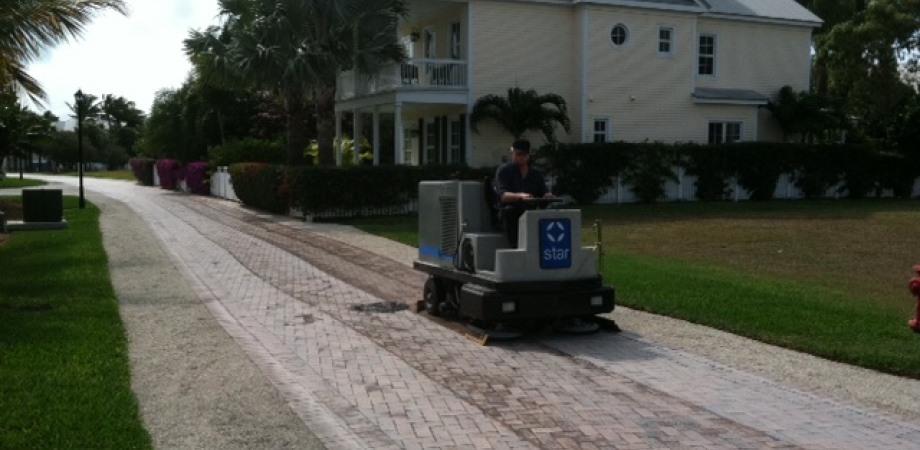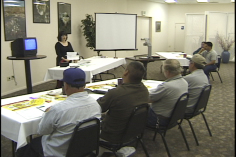
1910.178 Forklift Operator Training
To better serve the industries needs, and to meet OSHA'd requirements. We at J&R Material Handling offer classes weekdays, evenings and weekends at your location. We also offer training at our location on weekends for smaller groups. Our trainer has had more than 40 years of experience in the material handling field. He has operated or repaired almost every type of forklift and maintenance machine in the work place.
PoweredIndustrial Trucks (1910.178) Latest OSHA Release March 1, 1999. General requirements: All employees hired after December 1, 1999 must be trained before being assigned to opertae a powered industrial truck.
We will train your employees at your facility, to operate your material handling equipment. We can train employees on special equipment and special attachment. We can Train one of you employees in our Train The Trainer Courses. We supply a complete classroom and hands on material.
* Classroom Time: 3 to 4 Hours
* Special Attachment Training available
Goals and Objectives
At the completion of this program the Powered Industrial Truck (Forklift Truck) operator trainee shall exhibit proficiency in the following areas:
1. Be familiar with the requirements of OSHA regulation
Powered Industrial Truck 1910.178 (Sub N) OSHA 1910.178(l)
- Have complete both formal instruction and hands-on training under the OSHA 1910.178(l) (1) (i,ii & iii)
direction of a competent, experienced trainer and have successfully OSHA 1910.178(l) (2)1(A)
Passed a comprehensive examination on subject matter covered in both OSHA 1910.178(l) (2) 1(B)(ii & iii)
the formal and hand-on components of the training.
- Exhibit an awareness of the purpose, function and basic concept
of Powered Industrial Trucks operation. OSHA 1910.178(l)3(i)
- Demonstrate a knowledge of the types and purpose of decals applied
to the Powered Industrial Truck. OSHA 1910.178(l)3(i)(A)
- Be aware of differences between the operation of an automobile and
an Powered Industrial Truck (Forklift Truck). OSHA 1910.178(l)3(i)(B)
- Demonstrate a knowledge of control functions for the Powered
Industrial Truck the operator is going to be operating. OSHA 1910.178(l)3(i)(C)
- Be Knowledgeable in Powered Industrial Truck engine and motor
operation. OSHA 1910.178(l)3(i)(D)
- Demonstrate a thorough understanding of Powered Industrial Truck
steering and maneuverability. OSHA 1910.178(l)3(i)(E)
- Possess an ability to adequately judge the available visibility to
insure safe operations. OSHA 1910.178(l)3(i)(F)
- Understand fork and attachment adaptation, operation & limitations. OSHA 1910.178(l)3(i)(G)
- Be able to quickly and accurately determine machine capacity and
stability for various types of loads. OSHA 1910.178(l)3(i)(H & I)
12. Perform machine inspection and maintenance as required. OSHA 1910.178(l)3(i)(J)
13. Possess a knowledge of safe refueling or recharging of batteries. OSHA 1910.178(l)3(i)(K)
14. Be able to quickly judge operating limitations under changing conditions OSHA 1910.178(l)3(i)(L)
15. Be able to comprehend operating instructions, warnings & precautions. OSHA 1910.178(l)3(ii)(A)
16. Judge the condition of surfaces where the Powered Industrial Truck
is being operated. OSHA 1910.178(l)3(ii)(A)
17. Be aware of the types of loads to be carried and the stability
characteristics of such loads. OSHA 1910.178(l)3(ii)(B)
18. Demonstrate an ability to manipulate, stack and unstack the type
of loads to be handled. OSHA 1910.178(l)3(ii)(C)
19. Possess a knowledge of pedestrian traffic patterns in the area being
worked. OSHA 1910.178(l)3(ii)(D)
20. Demonstrate an ability to operate safely given site restrictions such
as narrows aisles and walkways. OSHA 1910.178(l)3(ii)(E)
21. Be aware of hazardous locations on the work site such as refueling
areas and charging areas. OSHA 1910.178(l)3(ii)(F)
22. Be capable of safely operating on ramps and other sloped surfaces
in the work area. OSHA 1910.178(l)3(ii)(G)
23. Be aware of hazardous conditions in closed environments such as
adjustments for lighting, or hazards resulting from poor ventilation
such as carbon monoxide poisoning, and other environmental hazards. OSHA 1910.178(l)3(ii)(H & I)
24. Be evaluated by the employer for safe operation under working
conditions, in the work place. OSHA 1910.178(l)(6)
The Powered Industrial Truck operator must be recertified every three years. Causes for requiring the operator to be recertified before the expiration of this three-year include:
· If the operator is assigned to drive a different type of Powered Industrial Truck.
· Conditions at the workplace that may affect safe operation change.
· The operator has been cited for operating a Powered Industrial Truck in a unsafe manner.
· The operator has been involved in an accident or near-miss incident.
· The operator has received an overall unsafe operation evaluation.


